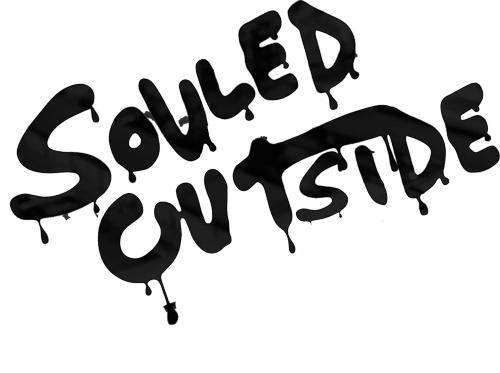A weathered Garifuna man greeted me at the dock. His boat was a rough fiberglass skiff that looked to be as comfortable here in the Caribbean as it would be chasing cargo ships off the Horn of Africa. A name was hand-painted on the side, “Tysam.”
Captain Noawel Nunez wore a par of wayfarer-style sunglasses in a worn, tortoise shell pattern. He’d been fishing off the coast of Hopkins since the 1980’s, he said, and today we were going to catch some fish. The primary target? Permit and bonefish, two of the most revered saltwater species in all of sportfishing. Wealthy fishermen spend big money to catch these fish all over the globe. Anglers who aren’t so fortunate often sell personal property to afford the gear the chance. Marriages have been broken over permit and bonefish.
Today, we would head out to Belize’s barrier reef—the largest in the western hemisphere—and try to catch them with a fly rod.
Nunez hand cranks the 40 horsepower Yamaha outboard and set off towards the morning sun.

By trade, my work as a travel writer blends with fishing journalism in a cocktail of publications that don’t always appear to connect but usually manage to pay the bills. TravelChannel.com and Bassmaster Magazine; Business Insider and Fishing Tackle Retailer, on the surface, the connections aren’t obvious. But underlying each is a passion for being outside, exploring the world around us, and interacting with animals both above and below the water’s surface. It was the world of fish that brought me into travel. My first true adventures took place first on the rivers and lakes of Tennessee, the swamps of Florida and the the vast, desert reservoirs of Utah and Arizona.
Captain Noawel’s skiff was bobbing through the Caribbean 2,000 miles south of the waters that I call home. And though I’ve shared many boats with many captains—some among the best in the world with a rod and a reel— I am no fly fisherman.
To a Tennessee bass angler, the world of fly fishing is as foreign as a tapir roaming the Belizean rainforest. Sure, I know how to cast a fly rod in a rudimentary fashion. But catching two of the most sacred saltwater fish in all of sportfishing a fly rod? And catching them with a broken arm? That could be a challenge.
Regardless, I was game.
Our skiff sputtered to a stop in a mangrove forest within sight of a manmade boat ramp that local fishermen had crafted out of conch shells. Thousands of the bleached white shells were stacked together in front of a pair of shacks that the real expert anglers here called home. These weren’t the homes of men fishing for fun, but for food. Under their watchful eye, Captain Noawel procured a battered fly rod from a case and set to work.

If you’ve done any sort of conventional fishing, you’re aware that casting a lure is generally like throwing a baseball: you swing the rod back and let the line go at just the right moment. It’s a simple motion that allows the weight of the lure to carry itself away from your rod tip and into the water.
Casting a fly rod is totally different.
In this world, the lure weighs almost nothing. The weight in your cast comes from the line itself, and you need to let a lot of line out to gain any distance. To me, the process resembles trying to use a butterfly net that’s timed to a metronome. You must make repetitive, sweeping casts that are perfectly timed, each one letting loose a bit more line until you reach the desired casting distance. Unlike a traditional fishing lure that goes “plop” into the water, a fly usually lands gracefully without disturbing the world around it much at all.
It’s a delicate, beautiful art form that is completely insane and completely impractical. Because Captain Noawel is a lover of fish—and a savvy businessman—he’s become a master of this most unusual art.
We drop anchor, hop out of the skiff and begin to walk the shallow waters near the mangroves. We’re fishing with our eyes here. Before ever making a cast, we must spot the telltale fins of permit and bonefish piercing the knee-deep water.
It’s a grey morning for Belize. A recent cold front has lessened the appetite of the fish, the tide is a bit low, and to make matters worse we manage to break Noawel’s fly rod before ever leaving our first stop. I watched it snap myself. Just as the savvy Captain laid eyes on a pair of fish, the rod cracked into bits on the first cast.
We motion to Noawel’s first mate, Judel, to bring the Tysam over. We’ll choose another rod and another spot to fish.

After 25 minutes of pounding waves, we arrive at our second fishing location for the day. It’s an island located on the barrier reef. The shallow waters here offer up some of the most diverse wildlife habitat in all of Central America. Eagle rays, sharks, sea turtles, and hundreds of species of reef fish inhabit the area. As a result, the island is a popular stop for snorkeling tours. But we’re not interested in snorkeling, and we’re not particularly interested in the reef, either. We’re here for another reason: the island’s shallow shores are a known hangout for bonefish.
As Noawel and I hop out of the skiff, I notice Judel harvesting a hermit crab and a conch for the boat.
The ensuing hours passed much the same as the morning had. The Belizean sun finally emerged from its morning hangover as Noawel and I walked the shallows, scanning the sea for fish. We manage to spot a few bonefish and even a shark, but nothing will take the fly. The two of us manage to walk around nearly the entire island before rendezvousing back with Judel and the skiff on its far side.
We hadn’t had a single strike all day.
Disenchanted by the fly rod, Captain Noawel formulated a plan.
On the island’s deepwater side, we’d spotted a series of semi-abandoned docks and a rogue dive center that had been mostly ignored by people, but not by fish. The area near these docks had looked promising earlier, and we decided to return in a last ditch effort to catch some bonefish. This time, though, we were going to ditch the fly rod. We would fish the Garifuna way—by hitting a hermit crab with a rusty hammer, attaching it to some oversized bass tackle, and committing the fly fishermen’s heresy of using live bait.
Being pretty annoyed by the rich man’s fly fishing game at this point, I quickly cast a vote for the Garifuna method myself. On the very first cast, we caught a fish. And for the rest of the afternoon, we would spend more time with a fish on the line than off.

This is a common strategy among fishing guides, by the way. They save the money hole for last. But the three of us had been foiled all morning. Only a complete change in strategy had saved the day.
So there we sat: a Tennessee bass angler and two Garifuna fishermen on a glorified dugout in the Caribbean Sea. We caught bonefish after bonefish, losing some but winning the battle against most of the others. This culminated in a relative giant, a nine-plus pounder that took all the strength and savvy my one-and-a-half arms could muster to bring on board.
We called the catch a success. Then, with the sun beaming down full force, we called it a day.

Ecotourism is a godsend for developing countries like Belize. The country of less than 400,000 people claims that 40 percent of its land is protected for environmental conservation. Guiding can mean good money in a community like Hopkins Village, where Captain Noawel’s fishing service is based. Local resorts, like Hamanasi, often include his services in pre-booked packages. In a country where many people make $10 per day, tips from a full day of fishing can top $100.
Because of this, ecotourism can also give people a financial reason to protect the forests and waters that they call home. It can encourage them to fight against industries like diesel power, hydroelectric dams, and strip mining that would see unspoiled habitat gutted for a steak on a fat man’s table and another dollar in his pocketbook. Belize is not immune to this. In 2002, a Canadian energy company conspired with corrupt members of the local government to build a dam that destroyed the habitat of the last flock of scarlet macaws in Belize.
Still, much has been learned in the 17 years since. The world is now more aware of climate change than ever. And locals are more knowledgeable of how to make sustainable income off of natural resources than ever.
In the three decades that he’s been guiding, Captain Noawel says he’s seen the number of fish in his own fishing grounds drop by 20 percent. Due to warming ocean temperatures, the reefs have bleached several times in his lifetime. And yet, because of people like Captain Noawel, there is hope that humans will finally have an answer to climate change that works. It’s the only answer that will really make a difference—making the environment more costly to destroy than to protect.
For animals above and below the water, the future truly is a matter of bones or harmony.









